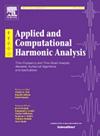Mathematical algorithm design for deep learning under societal and judicial constraints: The algorithmic transparency requirement
IF 3.2
2区 数学
Q1 MATHEMATICS, APPLIED
引用次数: 0
Abstract
Deep learning still has drawbacks regarding trustworthiness, which describes a comprehensible, fair, safe, and reliable method. To mitigate the potential risk of AI, clear obligations associated with trustworthiness have been proposed via regulatory guidelines, e.g., in the European AI Act. Therefore, a central question is to what extent trustworthy deep learning can be realized. Establishing the described properties constituting trustworthiness requires that the factors influencing an algorithmic computation can be retraced, i.e., the algorithmic implementation is transparent. Motivated by the observation that the current evolution of deep learning models necessitates a change in computing technology, we derive a mathematical framework that enables us to analyze whether a transparent implementation in a computing model is feasible. The core idea is to formalize and subsequently relate the properties of a transparent algorithmic implementation to the mathematical model of the computing platform, thereby establishing verifiable criteria.
We exemplarily apply our trustworthiness framework to analyze deep learning approaches for inverse problems in digital and analog computing models represented by Turing and Blum-Shub-Smale machines, respectively. Based on previous results, we find that Blum-Shub-Smale machines have the potential to establish trustworthy solvers for inverse problems under fairly general conditions, whereas Turing machines cannot guarantee trustworthiness to the same degree.
社会和司法约束下深度学习的数学算法设计:算法透明度要求
深度学习在可信度方面仍然存在缺陷,它描述了一种可理解、公平、安全、可靠的方法。为了减轻人工智能的潜在风险,已经通过监管指南(例如欧洲人工智能法案)提出了与可信度相关的明确义务。因此,一个核心问题是在多大程度上可以实现可信赖的深度学习。建立所描述的构成可信度的属性要求影响算法计算的因素可以追溯,即算法实现是透明的。由于观察到当前深度学习模型的发展需要改变计算技术,我们推导了一个数学框架,使我们能够分析计算模型中的透明实现是否可行。核心思想是形式化并随后将透明算法实现的属性与计算平台的数学模型联系起来,从而建立可验证的标准。例如,我们应用我们的可信度框架来分析数字和模拟计算模型中逆问题的深度学习方法,分别以图灵和Blum-Shub-Smale机器为代表。基于之前的结果,我们发现Blum-Shub-Smale机器有潜力在相当一般的条件下为逆问题建立可信解,而图灵机不能保证相同程度的可信度。
本文章由计算机程序翻译,如有差异,请以英文原文为准。
求助全文
约1分钟内获得全文
求助全文
来源期刊

Applied and Computational Harmonic Analysis
物理-物理:数学物理
CiteScore
5.40
自引率
4.00%
发文量
67
审稿时长
22.9 weeks
期刊介绍:
Applied and Computational Harmonic Analysis (ACHA) is an interdisciplinary journal that publishes high-quality papers in all areas of mathematical sciences related to the applied and computational aspects of harmonic analysis, with special emphasis on innovative theoretical development, methods, and algorithms, for information processing, manipulation, understanding, and so forth. The objectives of the journal are to chronicle the important publications in the rapidly growing field of data representation and analysis, to stimulate research in relevant interdisciplinary areas, and to provide a common link among mathematical, physical, and life scientists, as well as engineers.
 求助内容:
求助内容: 应助结果提醒方式:
应助结果提醒方式:


